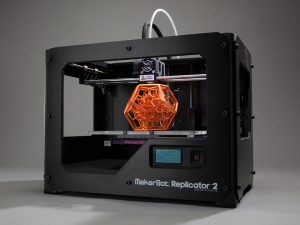
Five emerging tech markets to watch
By Andrew Krabeepetcharat, procurement research analyst, IBISWorld
Supply Chain emerging techThese five relatively new markets are worth keeping an eye on during 2017 as demand and commercial and personal use increase.
With 2017 fast approaching, IBISWorld has identified products and services that businesses should watch due to demand growth and rising regulatory change. These newly emerging technology products and services are less than a decade old and are quickly entering the mainstream. Emerging markets generally face significant regulation due to uncertainty surrounding the affect that these products and services will have on consumers. Taking a look at these increasingly regulated markets will allow businesses to better plan for purchases in the new year. Observing trends in regulation can help buyers predict how regulation in the future will affect a buyer’s purchasing leverage. While increasing regulation may make purchasing conditions more difficult and costly for buyers now, forecast deregulation may make some products and services less expensive in the future. The following markets are all experiencing fast sales growth and moderate to high levels of regulatory change, and as such, buyers should keep a close watch on them in the following years.
Drones (Unmanned Aerial Vehicles)
Previously reserved for military use, drones are quickly gaining traction in consumer and business markets. Due to recent cuts to federal defense spending, traditional military unmanned aerial vehicles vendors are redirecting focus so as to also serve the rapidly growing commercial market. Businesses and hobbyists are quickly adopting drones for purposes like media as they become more affordable and user-friendly. Drones now have improved functionality and features that allow users to capture high quality video and stream it to their portable devices. The increased range, speed and tracking abilities of drones have made them increasingly popular. However, their main appeal over the past few years has been the increased affordability. In fact, drone prices have been falling at an estimated annualized rate of 1.4% in the three years to 2016.
As a result of the fast popularization of drones, regulations have arisen to protect the safety of users. In June 2016, the FAA released its roadmap to drone integration, which opened up the commercial drone industry for businesses and consumers. The roadmap includes a list of requirements and limitations; some of the most drastic regulations are that drones must weigh less than 55 pounds and cannot fly higher than 400 feet. Also, drones must remain in the line-of-sight of the operator, cannot cross state lines and cannot fly at night. These new rules and standards for drone operation will continue to open up the commercial market during the next three years and drive stronger demand from retailers like Amazon, oil and gas operators, farmers, film and television production companies, local food delivery service providers and more. On December 14, for instance, retail giant Amazon announced its first commercial delivery using a drone. With demand increasing, IBISWorld anticipates prices for UAVs to rise 0.9% in 2017, further indicating that buyers that need such devices should purchase them sooner rather than later. However, buyers should be cautious as the drones purchased today may not be in line with regulations in the future.
Body Cameras
In light of recent fatal incidents taking place across the nation, law enforcement agencies have been increasingly outfitting their officers with body cameras. Currently, nine states have mandates or guidelines pertaining to the use of body cameras. For example, Illinois requires that police officers record the majority of their law-enforcement related activities. However, more states are likely to adopt the use of body cameras over the years as more incidents regarding the safety of law enforcement and citizens are prompting legislation change. As a result, buyers can expect an increased demand for body cameras in the coming year.
Growing demand has stemmed from a particular set of groups that rely on body cameras for issues regarding liability and responsibility. The most prolific buyers of body cameras are law enforcement agencies, commercial security providers, first responders, military organizations, transportation providers and filmmakers. These organizations are quickly adopting body cameras as a way to prove past events for legal reasons. Luckily, declining input costs are making body cameras much more affordable for businesses. Overall, prices are forecast to drop 2.4% during 2017, indicating that buyers do not need to quickly enter contracts because prices will continue to drop over the next year. Also, buyers purchasing body cameras in large quantities can achieve substantially lower pricing as suppliers are willing to lower prices for high volume purchases.
3D Printers
3D printing is one of the fastest growing technologies of the past few years, because businesses and consumers are quickly discovering the practical applications. In particular, 3D printers have been used in the manufacturing industry to quickly create prototypes, and they are now being used in the medical field. In March 2016, the FDA approved the first-ever 3D printed drug, which relies on3D printing to create a more dissolvable pill. Prosthetic devices and implants are also being created with 3D printing technology so patients receive a more precise fit.
Currently, 3D printers are only subject to regulations that extend to the manufacturing sector as a whole. The rising use of 3D printing in the medical field may necessitate more stringent compliance with the FDA as it becomes a health concern. Similarly, legislation regarding the 3D printing of weapons is also increasing. In July 2016, California passed a law that would require makers of 3D printed guns and other homemade firearms to apply for an official serial number from the Department of Justice. Despite this increasing rate of change, regulation will not hamper buyers’ ability to purchase 3D printers in the future.
Overall, rising demand will limit the rate of price declines, somewhat tempering buyer power. During 2017, IBISWorld projects prices to decline 6.1% due to heavy competition, favoring buyers. With prices quickly declining, buyers have the option to hold off on purchasing 3D printers to attain a cheaper price.
Solar Panels (Photovoltaic Panels)
All types of businesses and consumers are making a move away from fossil fuels as prices for solar panels have declined. Solar power has become less expensive than grid electricity due to the drop in costs for solar technology and growth in electric utility rates. Demand for photovoltaic panels has risen as regulation and concerns about global warming and fossil fuels have become increasingly important. As a result, solar panels are quickly being adopted in homes and businesses throughout the United States. Also, buyers installing solar panels have a tax credit incentive. Currently, the IRS offers a business investment tax credit of 30.0% of the cost of the solar panel installation, making the installation less costly.
Existing regulation against the plug-and-play solar power systems that allow for fast and easy home installation of solar panel without professional technicians, are in certain cases, prohibitively difficult to purchase; their associated arbitrary fees and paperwork make it difficult to get permission to install these systems. A plethora of confusing rules and varying legislation between local and federal systems has been holding back the integration of solar panels for many homeowners. Government and environmental legislation regarding PV panels are subject to extensive change, which can affect production processes for manufacturers and tax incentives for buyers. In the past three years, tax breaks vary among different state and local governments but have been bolstering PV panel sales nationwide.
Many factors have contributed to the decline in PV panel prices, including falling silicon prices, cheap imports from heavily subsidized producers in China and advances in solar cell efficiency and manufacturing processes. Prices for solar panels are projected to decline 2.3% during 2017, indicating that buyers do not need to enter into contracts before the new year. To receive additional discounts, buyers should consider making volume purchases whenever possible. A higher purchase volume lowers the price per system, because PV panel manufacturers benefit substantially from economies of scale and thus reward large orders with significant discounts.
Cybersecurity Insurance
Cybersecurity insurance has become increasingly important as more individuals and businesses rely on technology and the number of cyber threats increase. More companies are investing in cybersecurity insurance to help reduce financial losses from data security incidents that threaten their IT infrastructures, including data breaches and computer hacking. Companies with large databases of user information, such as retailers, healthcare providers and data hosting providers, have been boosting demand for the service. Furthermore, greater demand for cybersecurity insurance stemming from the rise in high profile security breaches with companies like LinkedIn, Verizon and the IRS has caused a rise in insurance premiums. Fortunately for buyers, competition in the market keeps prices low and falling. According to IBISWorld, prices for cybersecurity insurance prices are projected to decline 1.4% during 2017, giving buyers more time to find an appropriate vendor.
Currently, this market is subject to only a small number of laws, and the majority of commercial businesses are not required to purchase cybersecurity insurance under these existing laws. However, proposed legislation that is expected to require some companies to partake in cybersecurity insurance policies makes existing regulation uncertain. As such, the Cybersecurity National Action Plan (CNAP) will allocate $19.0 billion in 2017 to an array of cybersecurity measures. As a result, buyers can expect that insurance premiums will decline as organizations crack down on cyber threats.
Looking Forward
These five relatively new markets are worth keeping an eye on during 2017 as demand and commercial and personal use increases. Regulation in these budding markets is fading, paving the way for rapid sales growth in the coming years. As a result, buyers should pay attention to trends in pricing to determine the optimal time to enter contracts.



